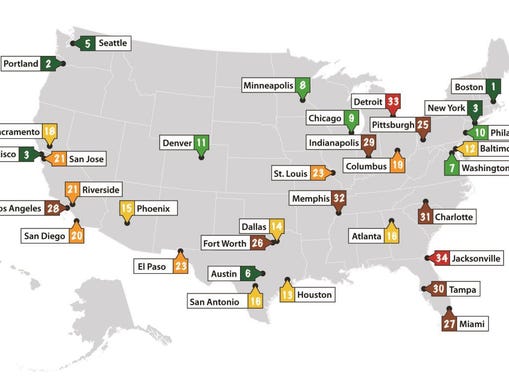Most people know that new light fixtures can reduce energy waste in office buildings, but even the experts may be surprised to learn just how much energy can be saved by running office buildings better.
NRDC’s new report on Real Time Energy Management shows how one company reduced electricity expenses by about $220,000 in one year simply by catching “operational stray.” The Report provides a roadmap for owners and tenants to improve their buildings and save money with similar projects.
Large office buildings are complicated systems. Building equipment often will “stray” from optimum settings. For example:
- Thermostats are adjusted for an evening meeting and not re-set to normal schedules, so the chiller runs at night for weeks.
- A sensor breaks, causing fans or pumps to run full-speed when not needed.
- A “bug” in software code causes an automated systems to start in the middle of the night.
These are normal events in the life of an office building. These problems must be expected to occur, even in the best buildings. The problem is not that “stray” occurs, but that it can persist undetected for months.
Catching “stray” quickly is the goal of real-time energy mangement. Doing so wastes less energy, saves money for owners and tenants, protects equipment from wear and tear, and makes for better buildings.
A case study in savings:
In our Report, we examine the project Tower Companies implemented in three large office buildings it owns and operates in downtown Washington, D.C. Tower’s buildings were already high-performing buildings — two were Energy Star® buildings and the third was very close to receiving that rating before the project began!
In the first year of the project, Tower reduced electricity use by 23% in one building, 17% in another, and 7% in the third, for an average of 13% across all three buildings. Electricity expenses for these three buildings went down by about $220,000 in year. All that in year 1 of the project.
These amounts probably understate the actual savings. The implemented measures will likely save energy beyond the study period we measured. And Tower expects reduced maintenance expenses — that is, preventing a chiller from turning-on at night when it should stay off will lengthen the life of this expensive equipment, and running fans at lower speeds will reduce wear and tear on the machinery.
 Designers also can drill down and analyze wall, roof and floor assemblies.
Designers also can drill down and analyze wall, roof and floor assemblies.
 “We may have to take the bill down,” said Senate Majority Leader Harry Reid, D-Nev.,noting unrelated amendments including one by Sen. David Vitter, R-La., to weaken President Obama’s health care reform law. The bill’s authors, Sens. Jeanne Shaheen, D-N.J., and Rob Portman, R-Ohio, had removed some provisions to avoid divisiveness, but acrimony ensued anyway.
“We may have to take the bill down,” said Senate Majority Leader Harry Reid, D-Nev.,noting unrelated amendments including one by Sen. David Vitter, R-La., to weaken President Obama’s health care reform law. The bill’s authors, Sens. Jeanne Shaheen, D-N.J., and Rob Portman, R-Ohio, had removed some provisions to avoid divisiveness, but acrimony ensued anyway.
